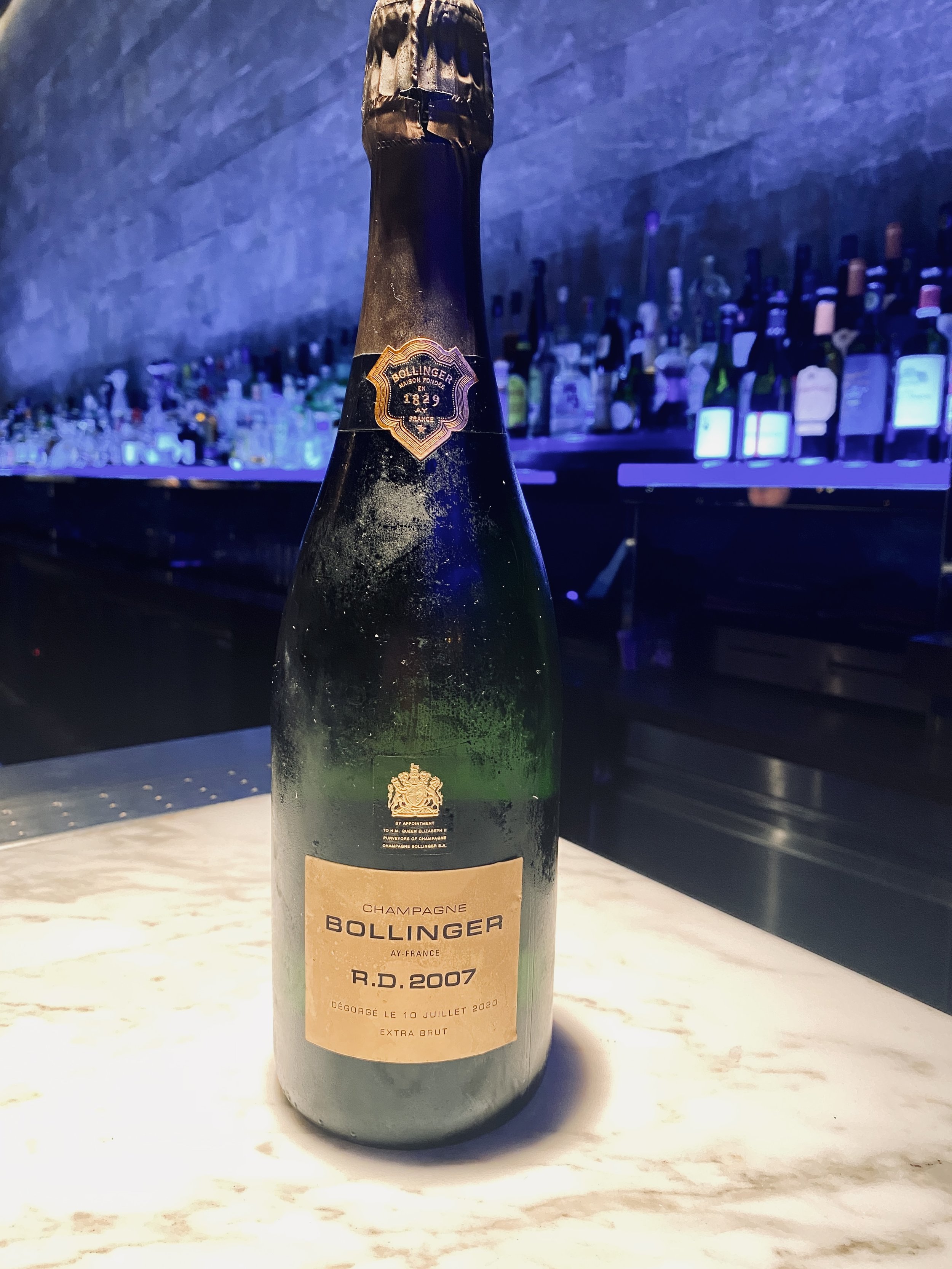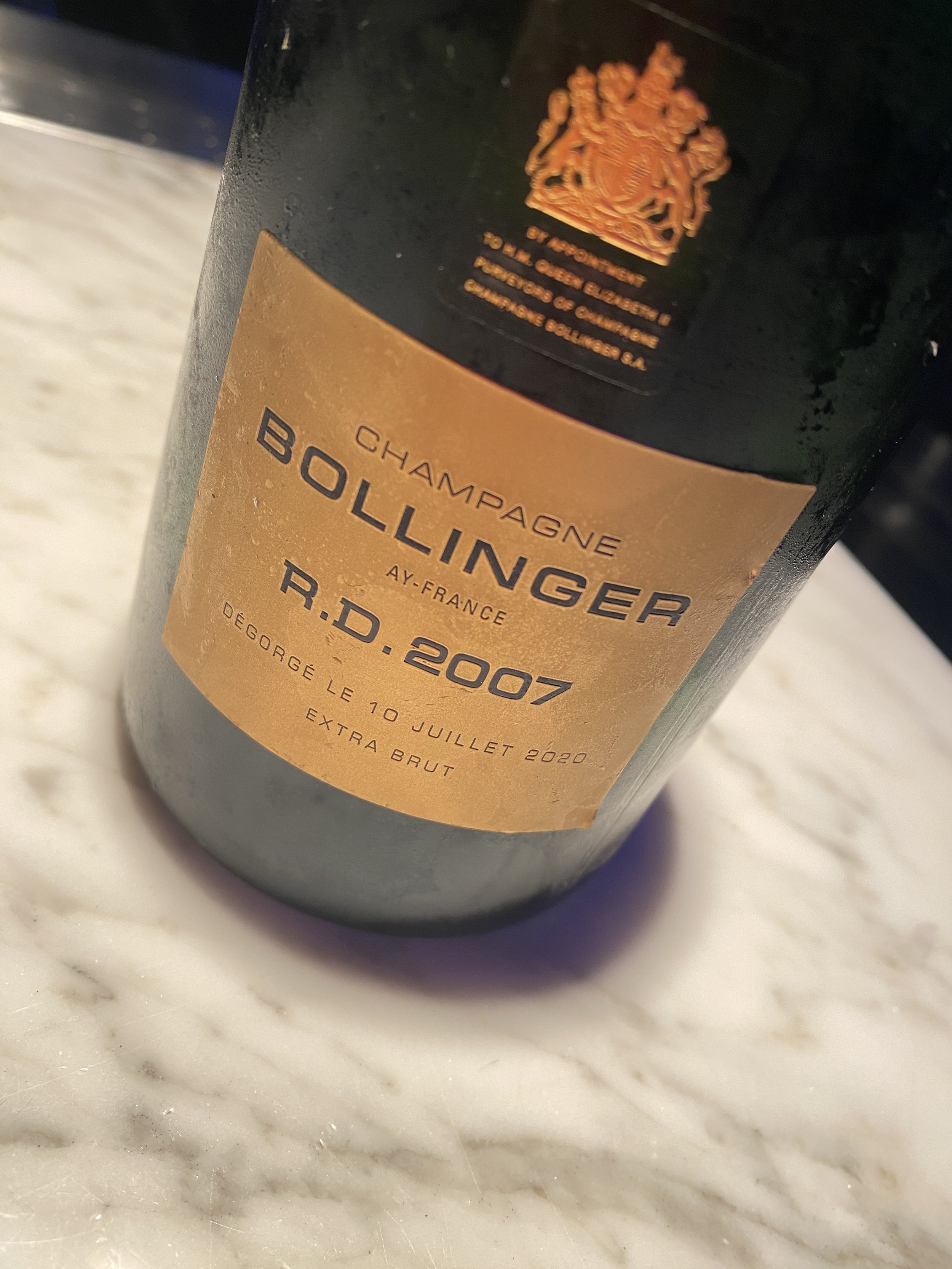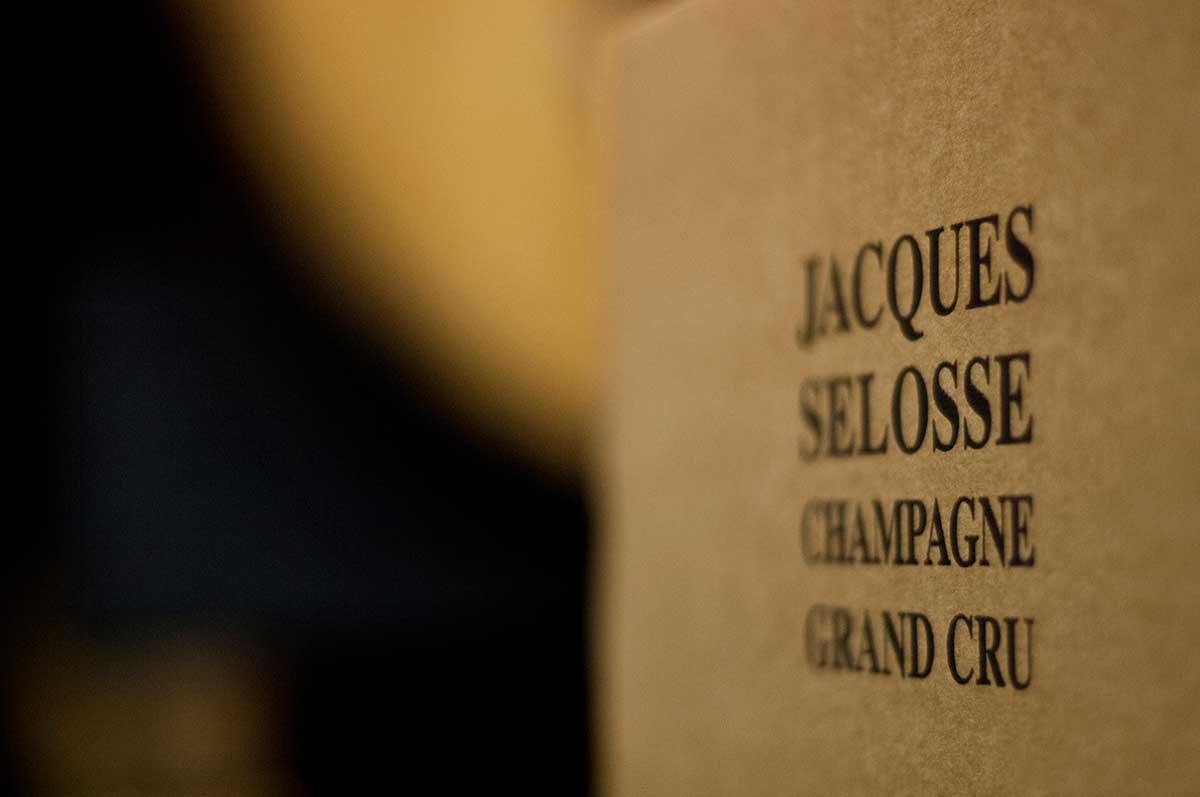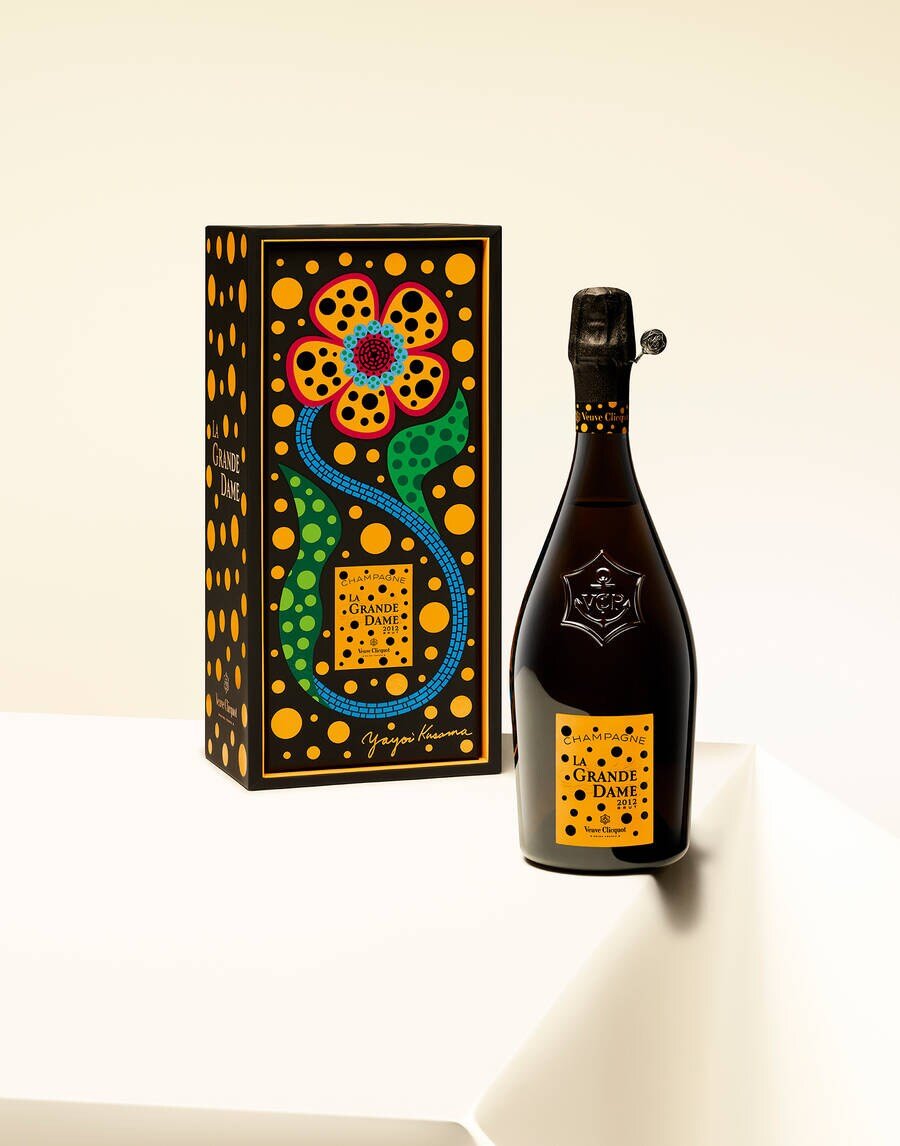Unveiling the Excellence: Discovering the Finest Champagne Producers
Imbibing champagne is more than just a savoring experience; it's a liaison with time-honored traditions, masterful artisanship, and a vibrant palette of flavors.
Yet, do we know the eminent creators behind these renowned bubbles? Are we confident in pronouncing their names correctly to truly honor their craft? Journey with us as we delve into the realms of the world's premier champagne producers.
Not only will we uncover the captivating narratives that make each bottle a symbol of elegance and luxury, but we'll also guide you through the nuances of pronunciation for each prestigious name. Let's decode the elegance together.
Salon Champagne: Embodying Singularity in Every Sip (Pronounced: sa-lawn)
Salon Champagne stands apart, a testament to the beauty of singularity. It's not just champagne - it's a symphony of carefully selected elements, each playing a unique role in its creation.
Imagine a single terrain, the celebrated Côte des Blancs, nurturing a specific cru, Le Mesnil-sur-Oger. Now picture a singular grape variety, the elegant Chardonnay, thriving in this cru. Every bottle of Salon Champagne is a harmony of these singular elements, defined by one exceptional vintage year.
The magic of Salon Champagne unfolds in a particular plot, lovingly called "the Salon garden", and nineteen other petite parcels in Le Mesnil-sur-Oger. Here, the grapes are handpicked, delicately pressed, and aged with utmost patience in cellars for about ten years. It's a journey of time that culminates in the effervescent complexity and finesse that Salon is renowned for.
One of the intriguing aspects of Salon Champagne is its rarity. It's only christened 'Salon' in those years deemed exceptional, resulting in merely four vintages per decade. The undeclared vintages aren't forgotten; they charm Delamotte or find their way to discerning champagne lovers under different labels.
Salon Vintages
Exquisite and exceptional, Salon Champagne released 43 specific vintages between 1905 and 2012, starting with Eugène-Aimé Salon's inaugural creation. These vintages, known for their individualistic brilliance, encompass the years 1905, 1911, 1914, 1915, 1916, 1917, 1918, 1920, 1921, 1924, 1926, 1928, 1929, 1934, 1937, 1943, 1945, 1946, 1949, 1952, 1953, 1955, 1959, 1961, 1964, 1966, 1969, 1971, 1973, 1975, 1976, 1979, 1982, 1983, 1985, 1988, 1989, 1990, 1995, 1996, 1997, 1999, 2002, 2004, 2006, 2007, 2008, 2012 and 2013.
This exclusivity stems from the Salon's philosophy of releasing champagne only in remarkable years after an average of ten years of cellar aging. Those years not marked by a Salon vintage contribute their essence to Delamotte or find their way under different labels.
Exploring the Legacy of Billecart-Salmon Champagne
Delve into the captivating legacy of Billecart-Salmon (pronounced "Bee-ey-kahr Sahm-ohn"), a family-owned gem nestled in Mareuil-sur-Aÿ, France. This medium-sized champagne house has kept the tradition of champagne-making alive since its establishment in 1818, the union of Nicolas François Billecart and Elisabeth Salmon. Today, Mathieu Roland-Billecart, a seventh-generation family member, leads the house with support from Antoine, Jean, and François Roland-Billecart.
The house meticulously manages a 100-hectare estate and sources grapes from an extensive 300-hectare area across 40 crus in the Champagne region.
Billecart-Salmon is a Champagne house run by the Billecart family since 1811. They focus on producing elegant Champagnes by harvesting high-acid, low-alcohol Champagne.
Their Champagnes include:
Brut Reserve NV: A non-vintage blend dominated by Pinot Noir, with Meunier and Chardonnay.
Blanc de Blancs Brut NV: A non-vintage blend made entirely from Chardonnay grapes from their grand cru vineyards in the Côte des Blancs.
Brut Sous Bois: Billecart-Salmon Brut Sous Bois, a standout selection from the Cuvée Collection, embodies a complex blend of aromas and flavors tied to its unique oak cask vinification process. The champagne uses Premier and Grand Cru fruit from the esteemed Cote des Blancs, masterfully blending Chardonnay, Pinot Noir, and Pinot Meunier grapes to craft its signature taste and texture.
Cuvée Nicolas François Brut Vintage: Billecart-Salmon Cuvée Nicolas François, a prestige cuvée crafted in honor of the House's founding father, Nicolas François Billecart. Reserved for years, this exceptional champagne features premium grapes from the distinguished Premier and Grand Cru vineyards nestled within Montagne de Reims and the Côte des Blancs.
The cuvée is a harmonious blend of Chardonnay and Pinot Noir. Its unique character and complexity are further heightened by barrel fermentation and partial aging in traditional oak casks, creating a champagne experience like no other.
Clos Saint-Hilaire Brut Vintage: Billecart-Salmon Clos Saint-Hilaire Brut Vintage, a singular Blanc de Noirs cuvée. This unique offering springs from a one-hectare plot of Pinot Noir vines in Mareuil-sur-Aÿ, France. The champagne is crafted exclusively during extraordinary years, resulting in a limited release of 1,000 to 5,000 bottles per vintage.
Notable releases include 1995, 1996, 1998, 1999, 2002, 2003, and 2006 vintages. With an impressive aging potential of 20 to 50 years, Clos Saint-Hilaire Brut Vintage is considered a rare and complex treasure within the Billecart-Salmon portfolio.
Cuvée Elisabeth Salmon Rosé Brut Vintage: Billecart-Salmon Cuvée Elisabeth Salmon Rosé, a prestige cuvée created in 1988 in homage to Elisabeth Salmon, the co-founder of the esteemed Maison. Crafted from an equal mix of Pinot Noir and Chardonnay, with a delicate hint of Pinot Meunier, this champagne mirrors the exquisite balance that underpins the Billecart-Salmon tradition.
Grapes for the cuvée are meticulously selected from Premier and Grand Cru vineyards scattered across the Montagne de Reims, the Côte des Blancs, and the Vallée de la Marne, ensuring the highest quality for each bottle.
With over a decade of aging before release, the Cuvée Elisabeth Salmon Rosé offers a sensory journey marked by its unique character and complexity."
Exquisite Elegance: Taittinger Champagne
Embark on a journey into the world of Taittinger Champagne, where exceptional flavors and rich history converge. Founded in 1734 and nestled in the heart of Reims, France, the Taittinger Champagne house has cultivated a reputation for crafting exquisite champagnes. Today, the estate is led by Vitalie Taittinger, the daughter of Pierre-Emmanuel Taittinger, ensuring a continued dedication to excellence.
Taittinger champagnes are renowned for their remarkable quality, distinct flavors, and numerous accolades. Among their flagship wines, the Comtes de Champagne, a 100% Chardonnay composition, showcases the house's finesse. Meanwhile, the Comtes de Champagne Rosé, blending 70% Pinot Noir with 30% Chardonnay, captivates with its allure.
Notably, Taittinger champagnes strike a delightful balance between exceptional quality and affordability, making them a superb choice for any occasion.
Their range includes:
Brut Reserve NV: their classic non-vintage blend that showcases their house style, which is known for its finesse, elegance, and freshness.
La Folies de la Marquetterie NV: Indulge in the rare and highly regarded Taittinger Les Folies de la Marquetterie Champagne. This non-vintage gem, made from a blend of 50% Pinot Noir and 50% Chardonnay grapes sourced from the historic vineyards surrounding Château de la Marquetterie in Reims, unveils a unique and complex flavor profile.
• Comtes de Champagne Blanc de Blancs Brut Vintage: Taittinger Comtes de Champagne, a Blanc de Blancs champagne of extraordinary distinction. Crafted exclusively from Chardonnay grapes sourced from the most prestigious Crus on the Côte des Blancs, this champagne embodies elegance and finesse.
Aged for a minimum of 10 years before release, Comtes de Champagne captivates with its unique and complex flavor profile. Each sip unveils a symphony of refined nuances, a testament to the meticulous craftsmanship and uncompromising dedication to quality that define Taittinger's prestigious offering.
BOLLINGER
Bollinger Champagne is a French Champagne house synonymous with exceptional sparkling wines from the renowned Champagne region. Founded in 1829 in Aÿ by Hennequin de Villermont, Paul Renaudin, and Jacques Bollinger, Bollinger remains in the hands of the Bollinger family to this day, ensuring a legacy of quality and tradition.
Bollinger offers a remarkable portfolio of Champagnes, including the vintage Vieilles Vignes Françaises, Grande Année, and R.D., as well as the non-vintage Special Cuvée. What sets Bollinger Champagnes apart is its distinctive character, derived from an unusually high percentage of Pinot Noir grapes. This unique composition imparts a complex flavor profile that aficionados appreciate.
Crafted as a blend of three grape varieties - Pinot Noir, Pinot Meunier, and Chardonnay - Bollinger Champagnes source the finest crus from the Champagne region. Meticulously vinified in oak barrels, these Champagnes showcase the artistry and expertise that define the Bollinger Champagne house."
La Grande Année
Bollinger La Grande Année is a prestige cuvée produced by Champagne Bollinger. The wine is made only from Grand and Premier Cru grapes, carefully selected from the best vineyards in the Champagne region. The wine is fermented in old oak barrels and aged for at least 8 years before release, which gives it a unique and complex flavor profile.
Grande Année is a blend of Pinot Noir and Chardonnay grapes, with the exact composition changing every vintage. The wine is hand-riddled and disgorged, a traditional method of Champagne production that involves removing the sediment from the bottle before corking.
The 2014 Grande Année is the latest release, and it is known for its rich and complex flavors of honey, toasted almonds, and brioche, with a long and elegant finish. Grande Année is highly regarded by wine critics and has won numerous awards and honors.
On the 179 hectares that contribute to making up the House, 85% are planted with Grand Cru and Premier Cru vines. These vines are spread out over seven main vineyards: Avenay, Tauxières, Louvois, and Verzenay are planted with Pinot Noir, Cuis is planted with Chardonnay, and Champvoisy is planted with Pinot Meunier. Bollinger is one of only a small number of champagne houses that grows most of its own grapes for its blends.
Vieilles Vignes Françaises
Vieilles Vignes Françaises, a remarkable cuvée crafted by Champagne Bollinger. This wine showcases the utmost dedication to quality, being made exclusively from 100% Pinot Noir grapes sourced from two small, meticulously maintained plots of ungrafted vines in Aÿ. These vines, miraculously preserved for over a century, yield grapes of exceptional character.
Fermented entirely in aged oak barrels and aged for a minimum of five years, Vieilles Vignes Françaises boasts a truly distinctive and complex flavor profile. As a Blanc de Noirs, this white wine from black grapes enthralls wine critics with its rarity and intricacy.
Available in limited quantities, Vieilles Vignes Françaises is hailed as one of the most coveted Champagnes on the market, representing the epitome of excellence and desire among wine enthusiast.
The Art of Time: Bollinger R.D, a Champagne Marvel
Within the realm of Champagne, a true masterpiece awaits - Bollinger R.D. Crafted with meticulous care, R.D. represents the epitome of prestige cuvées from Champagne Bollinger. Behind this enigmatic abbreviation lies a secret that unlocks an exceptional tasting experience.
R.D., which stands for "recently disgorged," unveils the intriguing journey this wine undertakes. Aged for an extended period on its lees or spent yeast cells, R.D. transforms, nurturing a symphony of flavors and textures within its depths. Each bottle lies dormant, gathering complexity and character until it is meticulously disgorged and adorned with a cork.
The result is a champagne with an unparalleled flavor profile, where delicate brioche notes intertwine with the tantalizing sweetness of honey and the rich essence of toasted almonds. Bollinger R.D. captivates the senses, offering an extraordinary sensory adventure for discerning palates.
Bollinger R.D. holds a revered status among Champagnes, acclaimed by wine critics and connoisseurs, coveted for its unparalleled depth and refinement. Each bottle tells a tale of dedication, expertise, and the art of time, making Bollinger R.D. one of the most sought-after Champagnes on the market.
In 1963, the first bottles of Bollinger R.D., which would later become famous, hit the market. In agreement with the House's New York-based agent, Madame Bollinger decided to sell several bottles of "Réserve 1947" in the United States. The goal was to "give some competition to the special bottles," or "Prestige cuvées," that other Champagne Houses were selling at the time.
“Bollinger R.D. is the absolute proof that our House remains faithful to Madame Bollinger’s work. It is the assumed expression of the contrast between great freshness and the development of aromas found in Champagnes with great ageing potential.”
PHILIPPONNAT
The Philipponnat family has been involved in grape growing for over five centuries and began making their own wines at the start of the 1900s. Their vineyards are primarily located in the Marne Valley, specifically in Aÿ and Mareuil-sur-Aÿ.
The house of Philipponnat prides itself on producing predominantly Pinot Noir wines, with oak used for fermenting base wines. However, the highlight of their range of wines is their famous single vineyard holding, the Clos des Goisses vineyard.
Located on a 5.5-hectare vineyard with a 45-degree slope, the southern-facing Clos des Goisses vineyard is renowned for ripening well. As a result, the house of Philipponnat has a longstanding tradition of using very low dosages across its entire range of wines.
Traditionally, the wines were fermented in large foudres, but a percentage is now fermented in 228 L barrels. The dosage is kept very low, with only around 4-5 g/l for the Brut-designated wines.
The Clos des Goisses Brut Vintage, with an inaugural vintage dating back to 1935, is another notable wine produced by the house of Philipponnat. Lastly, the Clos de Goisses Juste Rosé, first introduced in 1999, is another standout offering from the vineyard.
Clos des Goisses
One of the few "clos" in the area, the 5.83 acre vineyard is also the oldest and steepest in Champagne. It is located on Mareuil-sur-finest Ay's hillside in the ideal southerly position. Where the chalky bedrock is so near to the surface, it truly is a special terroir. In wooden barrels, partial vinification (62%) produces greater complexity without oxidation before it has fully developed. Because there is no malolactic fermentation, the wine's inherent acidity may balance out the terroir's strong flavor.
JACQUES SELOSSE
Jacques Selosse founded his estate in the 1950s and released his first vintage in 1960. When his son, Anselme, became a winemaker in 1980, he immediately reduced vineyard yields and transitioned to organic viticulture.
Selosse advocates for oxidative production and low dosage, evident in his top wine, Substance, created from a Solera of twelve different vintages.
In 1994, Gault-Millau named Selosse the best winemaker of the year. However, in the spring of 2013, burglars stole 300 cases of Champagne from Selosse's cellars, worth almost $350,000. The theft was particularly unusual as the burglars took 16,000 front labels, 12,000 neck labels, and 2,500 caps, suggesting they would counterfeit Selosse's wines.
Selosse is a Récoltant Manipulant with some of Champagne's lowest yields. He ferments the base wines in a mix of different-sized barrels, including pieces (228 L), Fût (400 L), and Demi-Muids (600 L), with fermentation relying on ambient yeast. Malolactic fermentation occurs naturally but not always. The base wine is aged 12 months in barrels, with less than 20% of new barrels used.
Selosse uses a low dosage for most of his wines, except Exquise, which has a dosage of 24 g/l. All other wines have a dosage between 0-5 g/l, highlighting Selosse's commitment to low-dosage production.
VEUVE CLICQOUT
Philippe Clicqout established the business in the latter half of the eighteenth century. In 1798, his son Francois wed Barbe-Nicole Ponsardin. Francois passed away in 1805, and the Veuve Clicquot (Barbe-Nicole) took control of the company.
Pinot Noir dominates every wine, from the Yellow Label to La Grande Dame. Vineyard plots are fermented individually for the best wines. The Yellow Label and Rosé wines also contain 25% to 40% reserve wine in their production. Both NV wines have an average dosage of 9 g/l and contain roughly 50% Pinot Noir, 28-33% Chardonnay, and 15–20% Meunier. All vintage wines are aged for a minimum of five years, while the NV wines are aged for thirty months on their lees.
La Grande Dame comes from eight Grand Cru villages, mostly from Verzenay and Avize. It is generally 60% Pinot Noir and 40% Chardonnay; the blend is the same for the Rosé.
The first House of Champagne was founded in 1729 and was motivated by a monk with incredibly advanced intuition.
Their main source of Chardonnay grapes is not the Côte des Blancs. Their most significant Chardonnay vineyards are located in northern Reims, close to the Grand Crus of Sillery and Verzenay.
LOUIS ROEDERER
By expanding the company, especially into the Russian market, Roederer was responsible for one-tenth of all Champagne production by the 1870s. Cristal, which was created exclusively for Tsar Alexander II by Louis's son Louis,
Champagne Deutz, Roederer Estate, Scharffenberger, Pichon-Longueville Comtesse de Lalande, Chateau de Pez, Domaine Ott in Provence, and Ramos Pinto in the Douro Valley are just a few of the wineries owned by the Roederer company.
“A wine of pure pleasure and a sophisticated gastronomic wine, Cristal
is both powerful and delicate, combining subtlety and precision”
Depending on the vintage, Cristal is made up of around 60% Pinot Noir and 40% Chardonnay. In oak barrels at Roederer, 15 to 25% of the basic wine for Cristal matures. These barrels are 6,000 liter fudre.
Eight villages, seven of which are Grand Cru, provide the Cristal wine with its grapes.
The Pinot Noir in the Rosé undergoes the saignée procedure to obtain its color before blending with the Chardonnay. The Rosé also contains around 60% Pinot Noir and 40% Chardonnay. Both Cristal wines spend an additional eight months in the cellar following dosage and corking, for five to six years in the bottle. All of Roederer's wines do not undergo malolactic fermentation.
POMMERY
After her husband passed away in 1858, Madame Pommery assumed leadership of Pommery & Greno. She built her business on producing wines unlike any other, always demanding the highest quality. She amassed a collection of the best vineyards in all of Champagne over the years, well understanding of the significance of the grapes' place of origin to the quality of her wines.
Within the Pommery Estate is a 25-hectare walled vineyard called Les Clos Pompadour with the charming and evocative name Madame de Pompadour. A true open-air creative laboratory
Special champagne created by the largest walled vineyards in the Champagne area is only available in magnums, completing its excellence.
Pommery operates under the guiding idea that the specific qualities of the wines must come from the blend of vintages chosen, blended, and stored over a long time in the cellar.
EGLY - OURIET
The Egly-Ouriet family has been farming grapes in Champagne for a long time, but did not begin making any of their own wines until the 1950s. In fact, it was not until 1982 that they even began using all of their grapes for their own production. The house style is powerful and intense, resulting from low yields, vines averaging 40 years old, and riper grapes at harvest. The wines are Pinot Noir dominant with the general breakdown of estate plantings ranging from 70% Pinot Noir to 30% Chardonnay. They also own two hectares of Meunier vines in Vrigny.
GOSSET
Gosset is a historic Champagne house and one of the oldest producers in the region. They primarily source their grapes from 45 different Premier and Grand Cru vineyards, as they own very few vineyards themselves. Gosset is known for its finesse and use of Chardonnay in its top cuvées.
The house's top cuvée, Celebris, comes in three styles: blanc de blancs, rosé, and blended. All of them are extra brut, meaning they have a very low dosage.
Gosset's base wines are fermented in stainless steel tanks but do not undergo malolactic fermentation. The wines are aged on their lees for a long time, with the NV wines aged for at least 4 years and the vintage cuvées aged for even longer.
Gosset's other cuvées include the Excellence Brut NV and the Grand Réserve Brut NV.
LAURENT-PERRIER
The Champagne house of Laurent-Perrier was founded in 1812 by André Michel Pierlot, a former cooper. Today, the firm focuses on producing wines in temperature-controlled stainless steel tanks without using oak.
The Brut non-vintage, which constitutes a significant portion of their production, is typically made up of over 50% Chardonnay and aged on its lees for a minimum of three years, with magnums aged four to five years. The Ultra Brut, a blend of 50/50 Chardonnay and Pinot Noir, was first introduced in the late 19th century and later revived in the 1980s. This wine is typically produced with a very low dosage.
The Grand Siècle, a blend of 55% Chardonnay and 45% Pinot Noir, is generally made up of three vintages sourced from eleven Grand Cru vineyards and is aged on its lees for eight years or more before release. In exceptional years, a single vintage reserve Grand Siècle may also be produced.
The Cuvée Rosé is made entirely from Pinot Noir, while the Cuvée Alexandra is always vintage and is named after co-director Alexandra Pereyre. This wine is mostly Pinot Noir, with a small amount of Chardonnay macerated together, and is aged for a minimum of seven years before release.
Laurent-Perrier's top wines include the Rosé Alexandra, Grand Siècle, Cuvée Rosé, and Ultra Brut. The Grand Siècle was first released in 1959, followed by the Cuvée Rosé in 1968, and the Cuvée Alexandra in 1987.
Three principles that have since become immutable form the foundation of Grand Siècle's assemblage.
A combination of three outstanding years, each with a unique character.
A blend made up primarily of Chardonnay, with Pinot Noir added, and chosen from 11 of the existing Grands Crus in Champagne.
A blend that has benefited from more than ten years of cellar aging.
KRUG
Joseph Krug, a visionary nonconformist with an uncompromising worldview, founded the House in Reims in 1843. His ambition was to create the best Champagne he could offer every year, independent of seasonal differences in the climate, having realized that the fundamental essence of Champagne is pleasure itself. Joseph Krug was able to realize his objective by paying special attention to the vineyard's characteristics, respecting the uniqueness of each plot and its wine, and creating a sizable collection of reserve wines from years and years.
The Krug family has carried on this dream for six generations, expanding the founder's insight and expertise.
Krug Clos du Mesnil, a very rare Champagne, highlights the distinct personality of a single Chardonnay plot that is harvested in a single year. Since 1698, walls have served as a barrier around this 1.84-hectare vineyard, which is viewed from the village church. The vineyard is situated right in the middle of Mesnil-sur-Oger, one of the most well-known Chardonnay-producing villages in the Champagne region.
“Krug’s Clos du Mesnil gives us Chardonnay grapes with a consistently distinctive and beautiful expression. The unique location of this tiny vineyard, protected by the houses, as well as the precision with which we harvest it at the optimal moment are what allow us to capture Krug Clos du Mesnil’s signature lace-like freshness and length on very special years.”
KRUG CLOS D'AMBONNAY
A rare Champagne from a remarkable terroir, the Clos d'Ambonnay, has been revealed by the exceptional craftsmanship of the House of Krug. This tiny 0.68-hectare walled plot is in the center of Ambonnay, one of Champagne's most renowned Pinot Noir-producing villages and the primary source of grapes for the House since its very earliest years.










